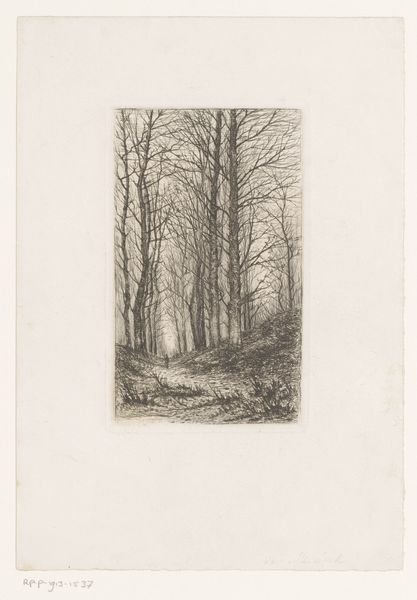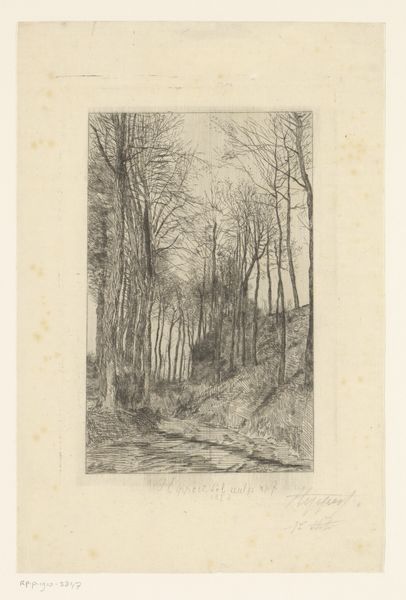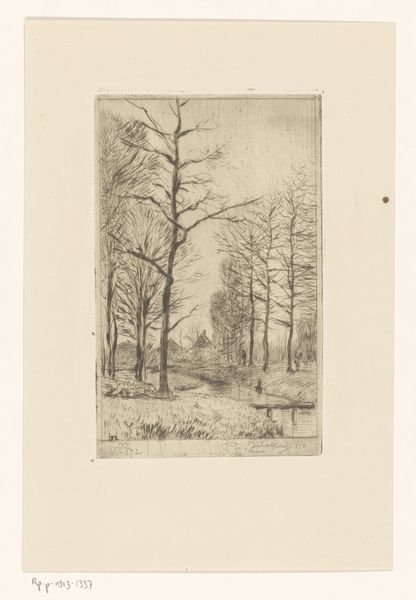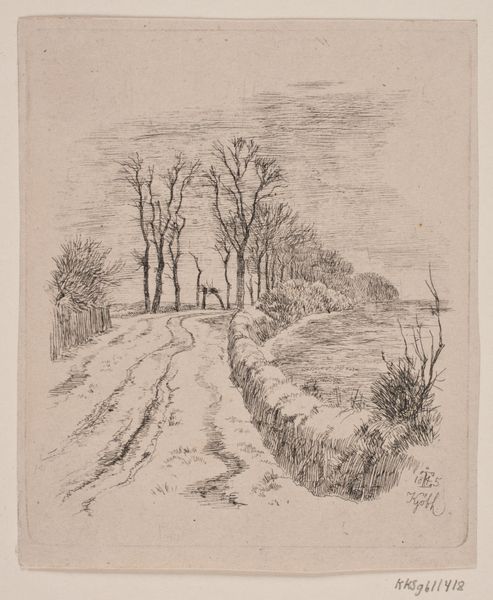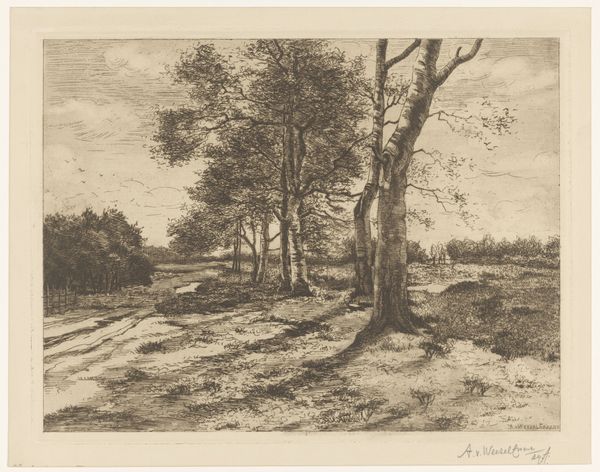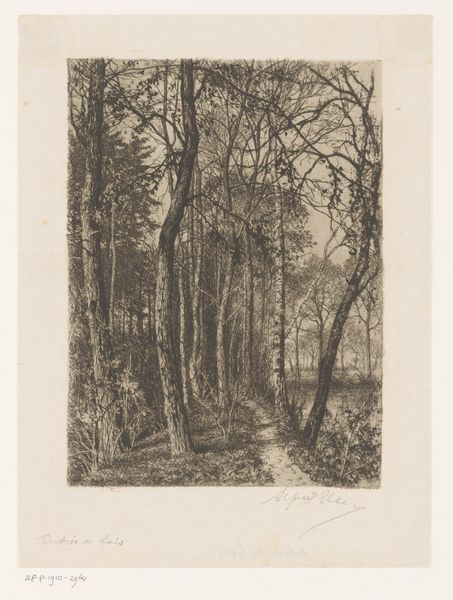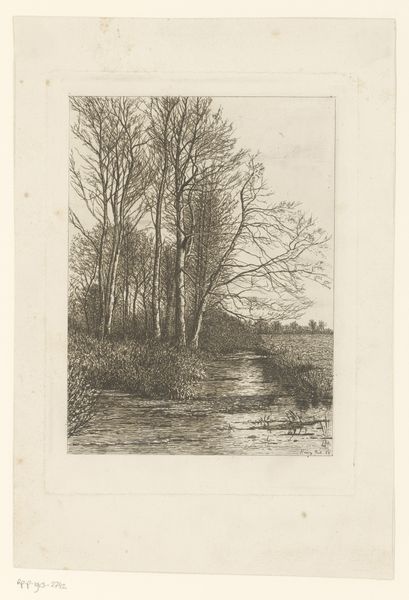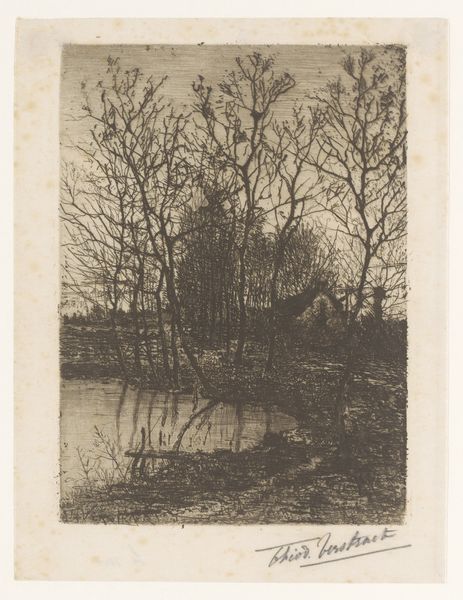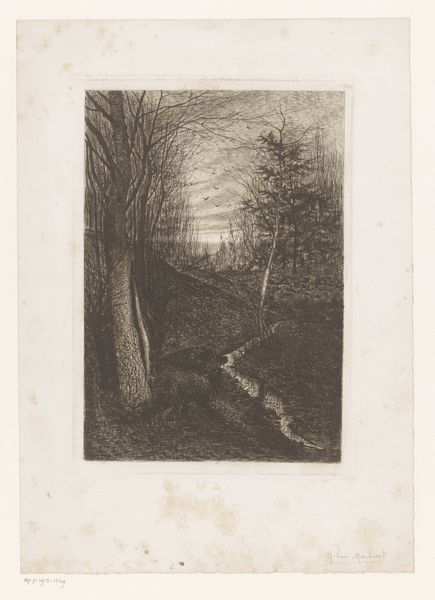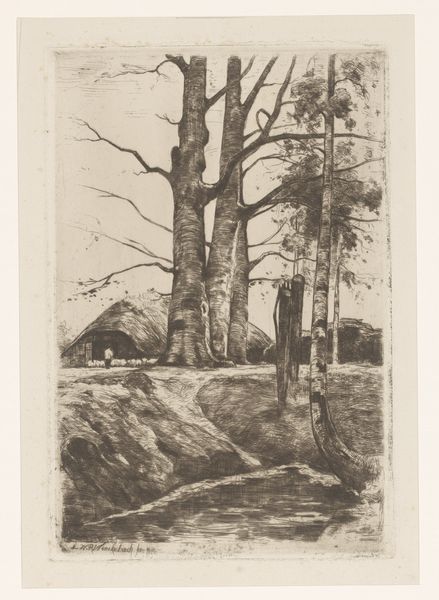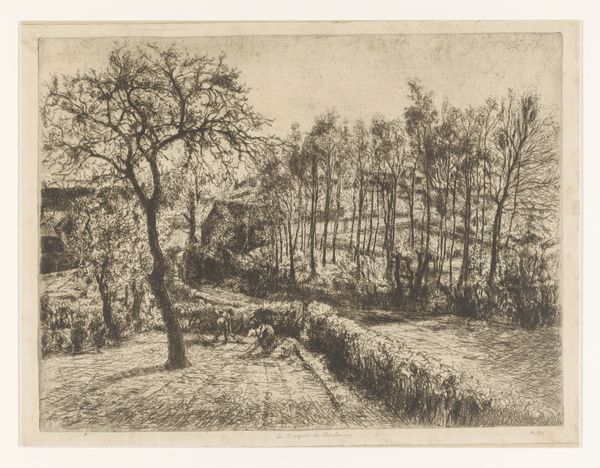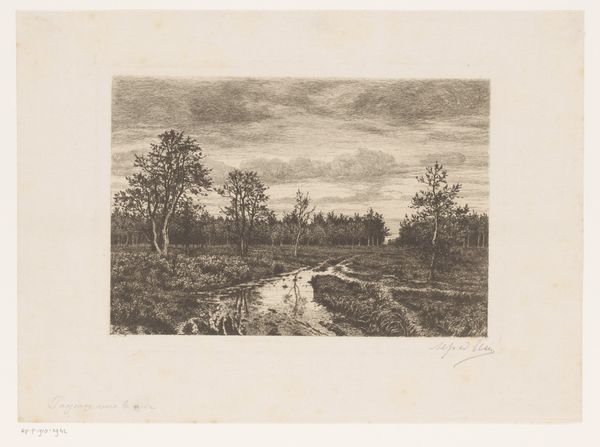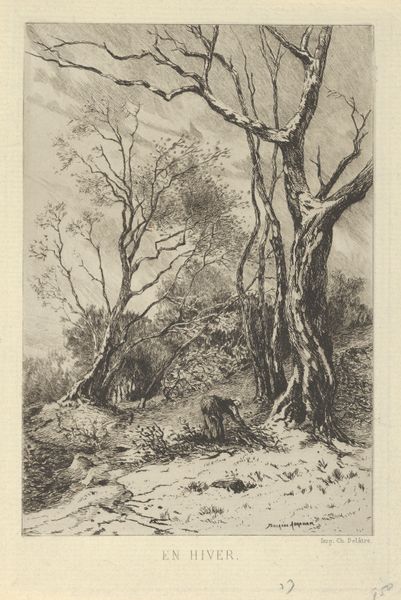
drawing, print, etching
#
drawing
# print
#
etching
#
old engraving style
#
landscape
#
etching
#
road
#
realism
Dimensions: height 342 mm, width 257 mm
Copyright: Rijks Museum: Open Domain
Curator: This etching, "Landweg bij Vilvoorde," by Carel Nicolaas Storm van 's-Gravesande, created before 1872, captures a stark, wintry scene. It's held at the Rijksmuseum. What are your first impressions? Editor: I find it incredibly detailed, especially for an etching. The lines create such texture. How does the choice of materials and the printmaking process influence how we should interpret it? Curator: Well, the act of etching itself – the labor-intensive process of biting into a metal plate with acid – speaks to a very specific kind of image production in the 19th century. This wasn’t about mass production in the photographic sense, but about a crafted, repeatable image. What do you notice about the subject matter? Editor: It’s a rural scene, a road… and lots of trees, maybe a construction site, with logs on the ground and smoke in the distance? It seems very much rooted in the everyday. Curator: Exactly. By focusing on this “everyday” scene—a simple road and its surroundings—van 's-Gravesande elevated the materials and labor involved in representing it. Do you see it as challenging the art world’s prevailing focus on more traditionally “noble” subjects, like historical or religious scenes? Editor: I do see that. Focusing on labor in a realistic depiction feels like it's saying something about the value of the working class. And printmaking itself made the work accessible for more people, so it also changes how art is consumed, right? Curator: Precisely. Consider the availability of prints versus unique paintings: this work democratizes art viewership, impacting its social role. It turns the art object into something circulating, discussed, and experienced in potentially radically new ways. So, in seeing a humble scene reproduced, we should consider how that challenges existing norms and how materiality itself produces meaning. Editor: I’d never thought about an etching in terms of material processes challenging artistic hierarchies! Thanks, that really changes how I see it. Curator: Absolutely. By considering production, consumption, and class, a landscape becomes much more than a pretty view.
Comments
No comments
Be the first to comment and join the conversation on the ultimate creative platform.
